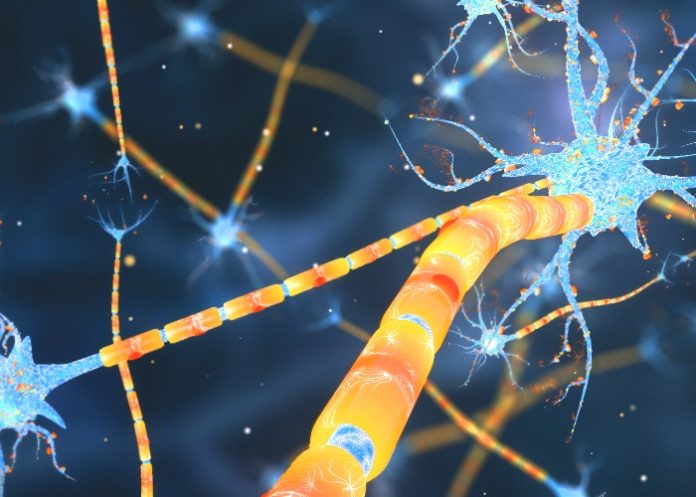A recent study found two drugs that can activate stem cells in the brain and reduce disease severity in animal models of multiple sclerosis. The results of the study were published in the scientific journal Nature. Both of the drugs are already approved by the U.S. Food and Drug Administration (FDA), albeit as topical applications for different conditions – one is currently used to treat athlete’s foot (miconazole), and the other is used for eczema (clobetasol). Researchers will need to transform these topical drugs for use internally and determine long-term efficacy and potential adverse effects before clinical trials in patients with multiple sclerosis can begin.
Multiple sclerosis is a chronic autoimmune disease that attacks the brain and spinal cord (central nervous system). Over 6,300 Connecticut residents (over 2.3 million people worldwide) suffer from the debilitating effects of multiple sclerosis. The disease is the most common chronic neurological disorder among young adults. Multiple sclerosis is the result of misbehaving immune cells destroying the protective coating (myelin) around nerve cells in the brain and spinal cord. Without myelin, nerve cells cannot transmit signals.
Current therapies for multiple sclerosis focus on slowing down further myelin destruction by the immune system. This recent study used a new approach to create new myelin within the nervous system. “Our approach was to find drugs that could catalyze the body’s own stem cells to replace the cells lost in multiple sclerosis,” says Paul Tesar, PhD, senior author of the Nature paper.
Stem cell research in regenerative medicine has focused on direct transplantation of stem cell-derived tissue. “But here we asked if we could find a faster and less invasive approach by using drugs to activate native stem cells already in the adult nervous system and direct them to form new myelin. Our ultimate goal was to enhance the body’s ability to repair itself,” explains Dr. Tesar.
The research team screened 727 drugs with a history of safe use in clinical trials to test whether they could make mouse stem-cell-derived progenitor cells (SPC) mature into oligodendrocytes (cells who’s major function is the formation of myelin). Miconazole and clobetasol performed best. Miconazole is an over-the-counter anti-fungal. Clobetasol is available by prescription to treat scalp and other skin conditions such as dermatitis. Each of these drugs significantly increased the number of new oligodendrocytes and enhanced myelin production in mice. They also promoted maturation of human oligodendrocyte progenitor cells in a laboratory setting.
The approach used in this study “combines cutting-edge stem cell and drug screening technologies to develop new chemical therapeutics for myelin disorders,” said Christopher Austin, MD of the National Institutes of Health (NIH). “It is clear that the discovery of drugs that control the function of stem cells in the body represents a promising new era in regenerative medicine.”
The results of this study indicate these drugs may be able to instruct stem cells in the brain to reverse damage caused by multiple sclerosis. Optimization of the chemical make-up and dosing of these drugs for multiple sclerosis treatment is necessary before progressing to clinical trials.















